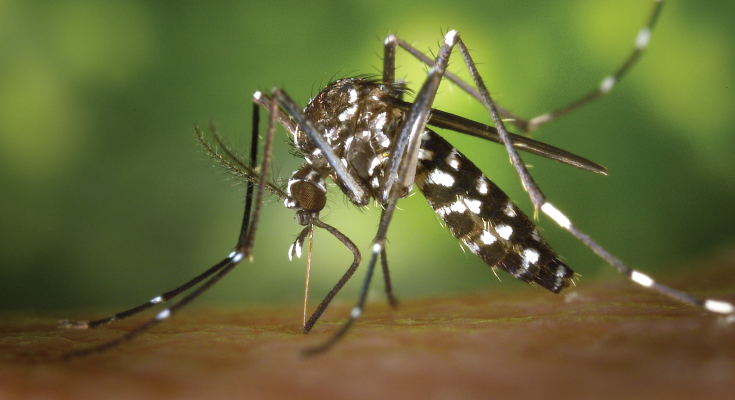The reason dengue fever is known as break-bone fever is that once this happens to you, it can cause a severe flu-like illness. There are four types of viruses that are spread by Aedes mosquitoes.
However, how severe the symptoms depend on person to person, some might experience severe dengue symptoms and some might experience mild dengue symptoms.
The best treatment for dengue is to prevent mosquito bites because there is no vaccine to prevent dengue. Severe symptoms include dengue hemorrhagic fever (DHF) and dengue shock syndrome (DSS) and in this situation, the patient needs to hospitalize as soon as possible.
If the patient is able to start the treatment before he/she is diagnosed with DSS and DHF, this can prevent them from severe risks and complications. According to the Center for Disease Control and Prevention, every year nearly 400 million people are diagnosed with dengue infection.
Things you should relate to Dengue:
1. The dengue problem results from a mosquito bite name as Aedes aegypti and Aedes albopictus.
2. Nearly 40% (2.5 billion) of the world population lives in areas that have a risk of dengue infection and transmission.
3. The dengue infection is found in nearly 100 countries in America, Africa, Asia, the Caribbean and the Pacific.
4. The dengue symptoms start within four to seven days after a mosquito bite the person and the symptoms can last up to three to ten days.
5. To prevent the severe risk, it is essential that the diagnosis happens in the early stage to get effective treatment.
Symptoms of Dengue:
The dengue symptoms can last up to 7 days after the mosquito bite that has the virus.
1. High Fever
2. Pain in joints and muscles.
3. Body rashes reappear once they are gone.
4. Severe headache.
5. Nausea.
6. Pain behind the eyes.
What is Dengue hemorrhagic fever – DHF?
In this condition, the patient experienced mild symptoms initially, but then slowly the symptoms become worse within a few days. There may be symptoms of internal bleeding and mild symptoms as well.
Symptoms of Dengue Hemorrhagic Fever:
1. Clammy skin condition.
2. Damage to the blood vessels and lymph.
3. Bleeding from nose, mouth and gums.
4. Internal bleeding can cause stools, feces and black vomit.
5. The lower number of platelets.
6. Weak pulse.
7. Sensitive stomach.
8. Small blood sport under the skin.
What is Dengue shock syndrome–DSS?
In this condition, the patient suffers from severe dengue symptoms.
Symptoms of Dengue Shock Syndrome:
1. Disorientation.
2. Heavy bleeding.
3. Extreme stomach pain.
4. Blood vessels leaking fluids.
5. Regular vomiting.
6. Fast drop in blood pressure level like hypotension.
If the patient does not get the treatment on time, this condition can lead to death.
Dengue Treatment for Milder Forms:
1. A patient who is suffering from dengue experiences dehydration because of vomiting and high fever and therefore drinking bottled water can be beneficial in this condition. Drinking more fluids also helps in the rehydration of salts and replaces fluids and minerals.
2. Your doctors might also give you some medications to ease your pain and help lower the fever.
3. There are certain types of drugs like Non-steroidal anti-inflammatory drugs (NSAIDs) that you should take care of because these drugs are not advised to prevent the risk of internal bleeding.
4. If the condition is severe, then the patient might not able to take fluids from the mouth and then drip and fluid supplementation come to the role.
5. In the severe dengue condition, the patient might also need a blood transfusion to prevent severe dehydration.
Causes of Dengue Infection:
1. According to the CDC, the dengue virus jumped from monkeys to humans between 100 to 800 years ago.
2. Dengue was not a huge problem until the middle of the twentieth century.
3. The dengue virus is spread by mainly two mosquito species known as Aedes aegypti, and the other is a rare species known as Aedes albopictus.
4. Aedes aegypti can be found in some of the most populated areas, but initially, this species was originated in Africa.
5. If a mosquito carrying the virus bites a human, the virus is also transmitted to that person. If the same mosquito bites an infected human and then bites another person, this can also transmit the virus from one to another person.
High-risk areas of Dengue Infection:
1. The Caribbean.
2. Pacific.
3. Central America.
4. South America.
5. Parts of Africa.
6. Parts of Asia.
High-risk regions of Dengue Infection:
1. The Caribbean.
2. North Australia.
3. Tropical Asia like the parts of China, Indonesia, and Bangladesh.
4. Central and South America.

